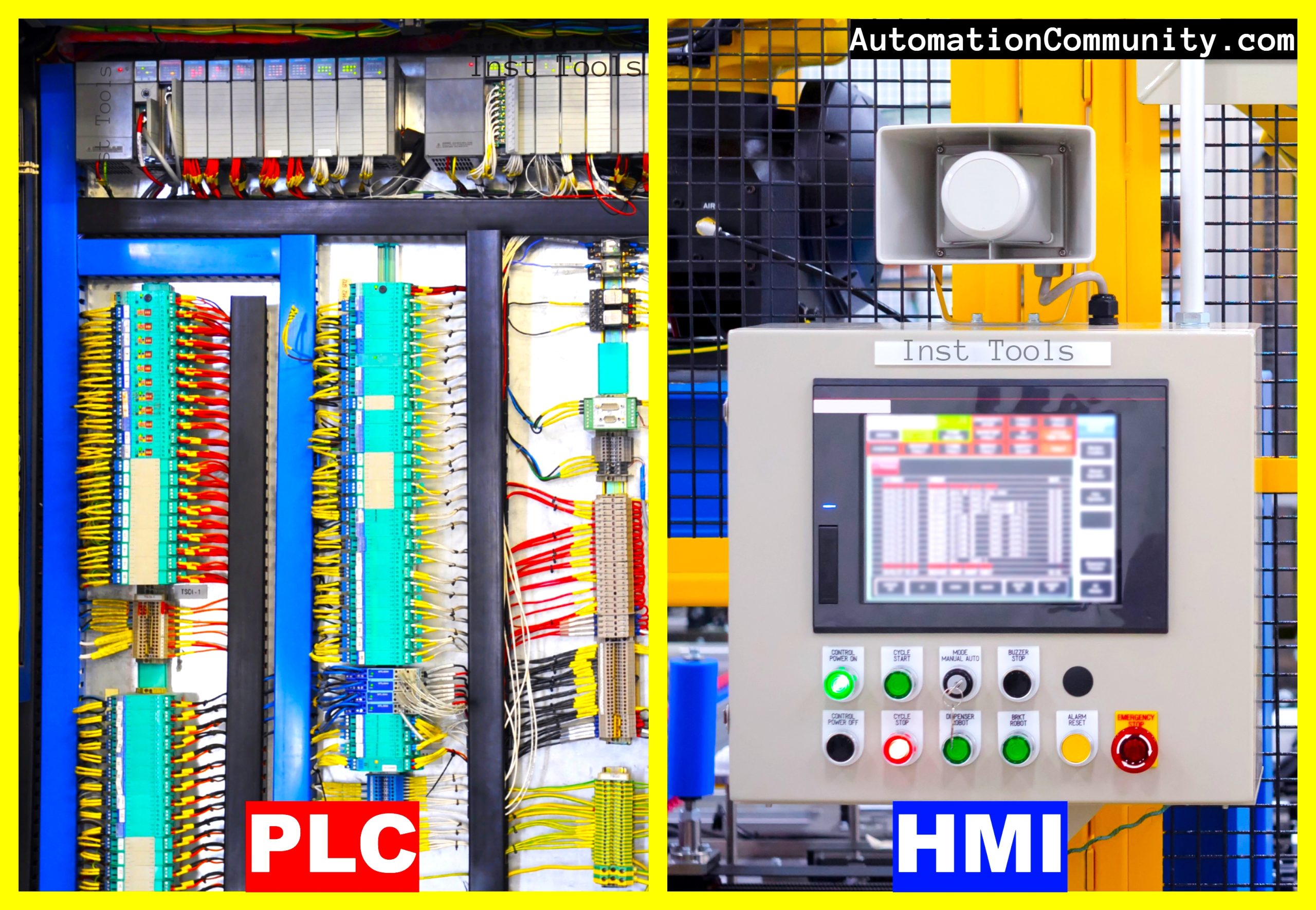Difference Between PLC and HMI
In this article, you will learn the difference between Programmable Logic Controller (PLC) and Human Machine Interface (HMI).
PLC
A PLC is designed to handle industrial field inputs and outputs and can be programmed to perform complex control algorithms such as PID control and motion control. PLCs are typically programmed using ladder logic, function block diagrams, or structured text.
HMI
An HMI is a user interface that allows operators to interact with and control industrial processes. HMIs are designed to provide a user-friendly interface for monitoring and controlling industrial processes and are often used in conjunction with PLCs. HMI typically uses graphics, touch screens, and keypads for the user interface.
Key Differences
PLC and HMI are both used in industrial automation systems, but they serve different purposes.
- Purpose: PLCs are used to control specific processes within an industrial setting, such as machinery on a factory floor. HMIs are used to provide an interface between a human operator and the process being controlled by the PLC.
- Control: HMIs are used to display process data and allow the operator to input commands, but they do not directly control the process. PLC receives input from sensors and process that data using a program, and then send output to actuators to control the process.
- Communication: HMIs are connected to the PLC and are used to display process data but HMI does not communicate directly with the process being controlled. PLC directly controls the process using standard industrial communication protocols.
- Complexity: PLCs are typically more complex than HMIs, as they are responsible for controlling the process and making decisions based on input from sensors and commands from the operator. HMIs are simpler, as they are only responsible for displaying the data and allowing the operator to input commands.
Difference Between PLC and HMI

| PLC | HMI |
| PLC is designed for industrial automation and control | HMI is designed for operator interface |
| PLC uses ladder logic, function block diagrams, or structured text for programming | HMI uses graphics, touch screens, and keypads for user interface |
| PLC can handle high-speed inputs and outputs | HMI used for monitoring and controlling process variables |
| PLC can be programmed to perform complex control algorithms | HMI displays real-time process data and provides alarms and alerts |
| PLC communicates via industrial protocols such as Modbus, Profinet, and Ethernet/IP | HMI communicates with PLC and other devices via industrial protocols or OPC |
| Examples: Allen-Bradley, Siemens, Mitsubishi Electric | Examples: Allen-Bradley PanelView, Siemens Simatic HMI, Pro-face GP4000 Series |
| PLC is used in a wide range of industries, including manufacturing, process control, and building automation | HMI is used in conjunction with PLC to provide a user-friendly interface for monitoring and controlling industrial processes |
| PLC is programmed to perform complex control algorithms, such as PID control and motion control | HMI is used to display real-time process data to make adjustments to the process |
| PLC can be configured for remote access and monitoring | HMI provides historical data logging and reporting capabilities |
| PLC integrated with other industrial devices, such as sensors and actuators | HMI supports multiple languages, allowing for easy operation by operators from different countries |
| PLC used for safety applications, such as emergency stop and interlocking | HMI is used for accessing the data from the safety logic. |
| PLC is used in harsh industrial environments with wide temperature ranges and exposure to dust and vibration | Typically HMI is designed for indoor use in a controlled environment |
| PLC can be used in stand-alone or networked configurations | HMI can be integrated with PLC and SCADA systems for monitoring purposes |
| PLC program may be password protected to restrict the unauthorized access | HMI can be configured to support user access levels and security measures to protect against unauthorized access or changes to the process |
| PLC can be configured for automatic or manual control of the process | HMI can provide recipe management, allowing operators to easily switch between different process settings |
| PLC can be used to integrate with IT systems such as ERP, MES, and cloud-based platforms | HMI can be configured to provide real-time notifications via email, SMS, or other messaging systems |
Conclusion
A programmable Logic Controller is designed to control and automate industrial processes. Human-Machine Interface is a graphical user interface between PLC and human operators.
Read Next:














